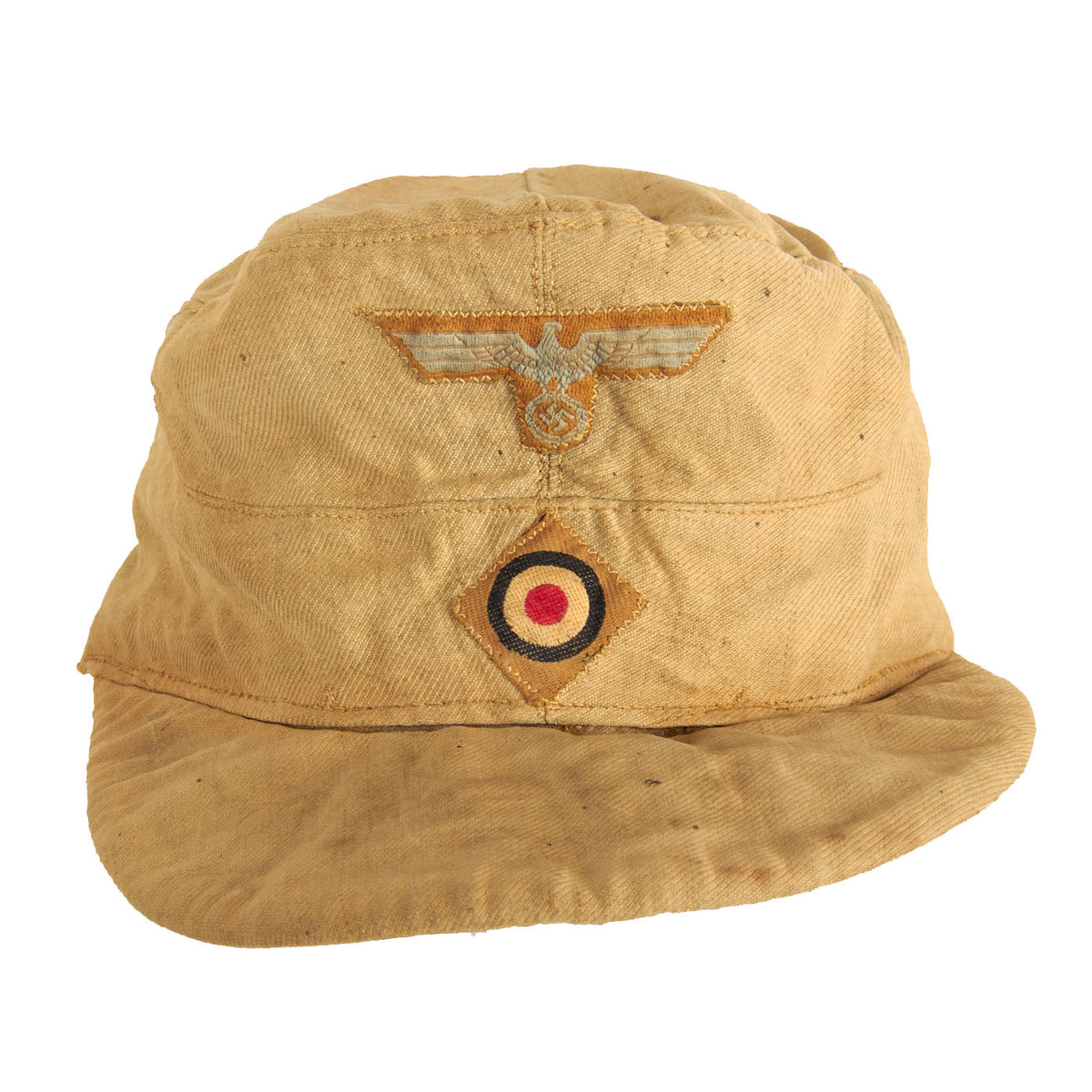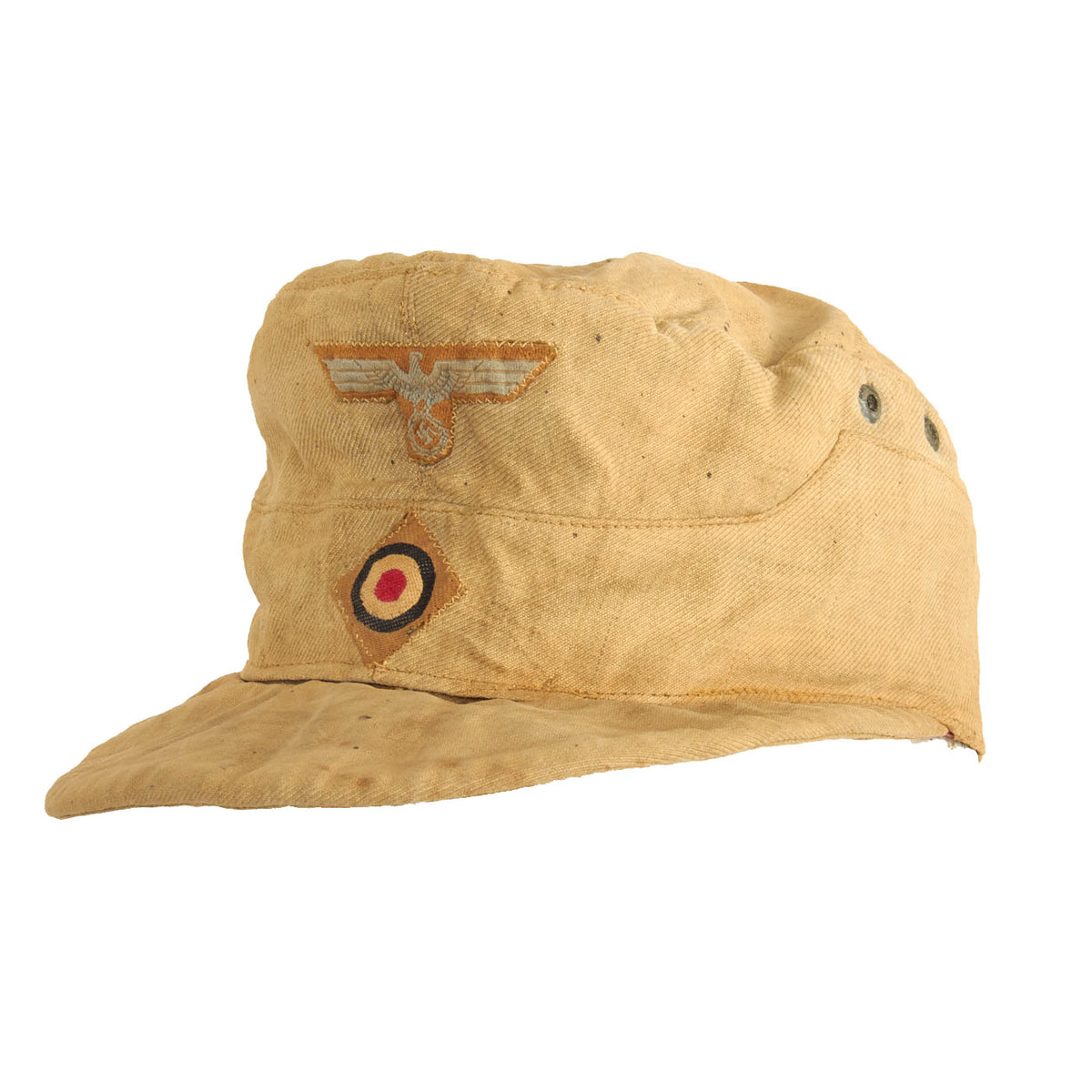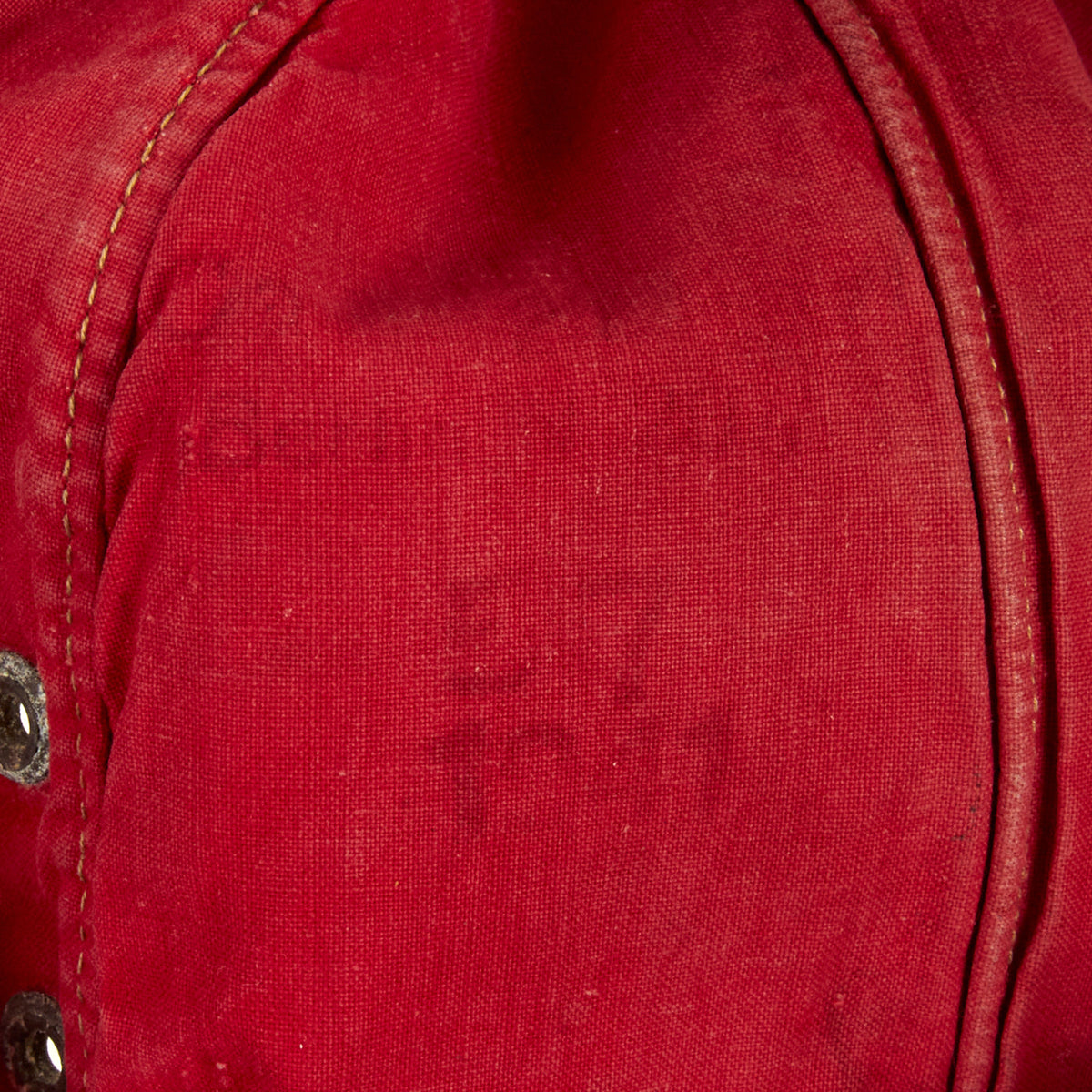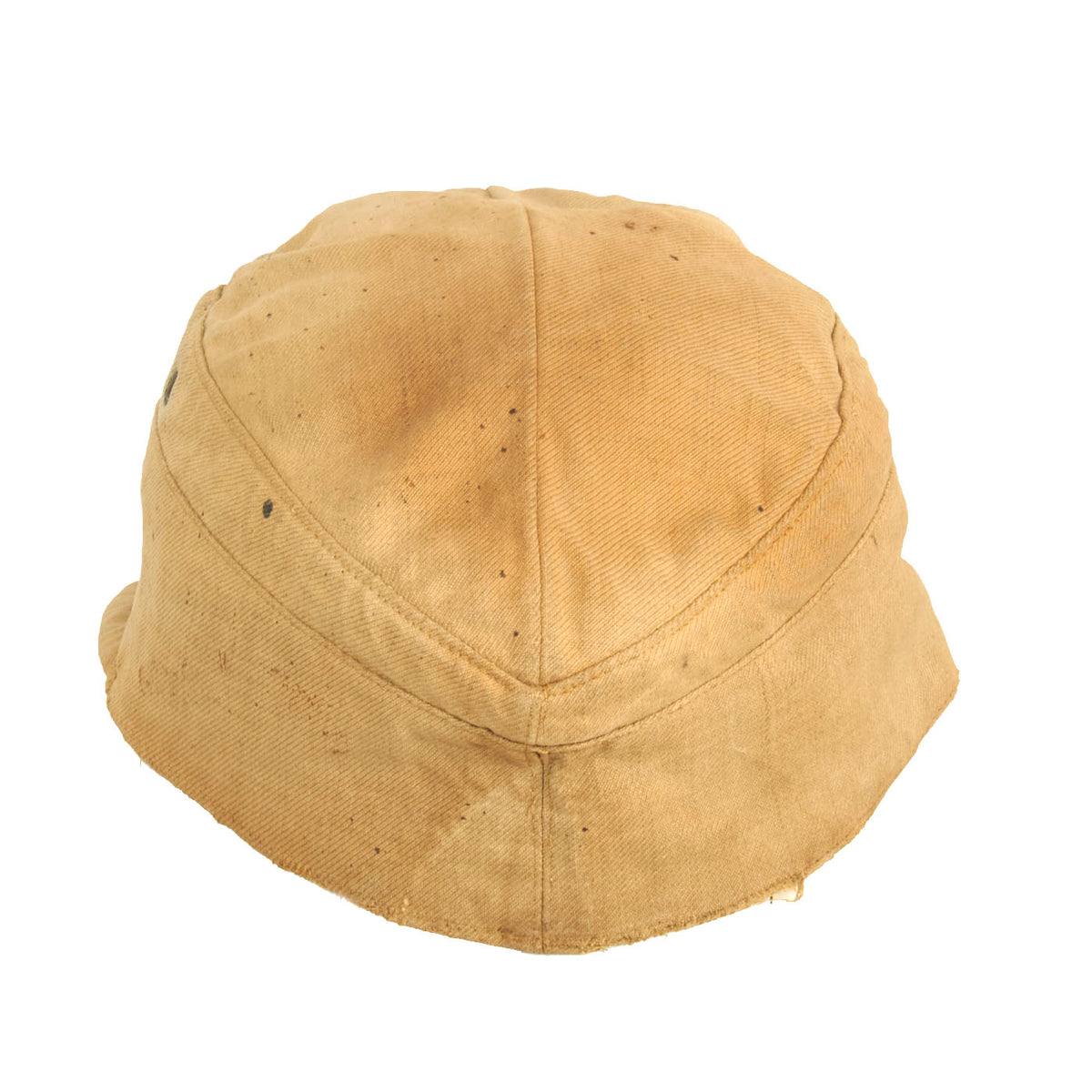Original German WWII 1941 Dated Service Worn M41 Afrikakorps DAK Tropical Field Cap in 57cm – Tropeneinheitsfeldmütze Original Items
$ 1.895,00 $ 473,75
Original Item: Only One Available. In late 1940, with the impending German entrance into the North African campaign, tropical uniforms headgear and equipment were quickly developed and issued in time for the Deutsches Afrikakorps (German Africa Corps or DAK), personnel’s arrival in Tripoli in February 1941.
The M41 tropical field cap was introduced in early 1941 and design of the cap was loosely based on the Mountain Troopers, Bergmütze with minor variations. Officer ranks caps were distinguished from EM/NCO’s with silver piping for the ranks of Lieutenant to Oberst and gilt piping for the ranks of Generalmajor to Generalfeldmarschall while EM/NCO’s ranks caps were not piped. The different branches of service within the army were allocated a particular identifying waffenfarbe, (Branch of Service Color), and originally the M41 tropical field caps had a branch of service soutache applied to the front consisting of an inverted “V” encompassing the national tri-color cockade but regulations of July 10TH 1942 abolished the use of the soutache and instructed it to be removed from the caps, although the directive was not strictly adhered to.
This very nice “salty” service worn example of the M41 Tropeneinheitsfeldmütze (Tropical Unit Field Cap) is correct in all respects, and these are rare in any condition. It features sun faded ribbed olive/khaki cotton twill construction, dual-ply, stitched down side and back panels with a gently scalloped downward slope to the front center. The cap has two ventilation grommets to each side positioned just below the outer edge of the crown seam. The top center seam is correctly stitched right through the interior liner for added strength.
The front center of the cap has a BeVo machine woven national eagle in light blue/grey threads on a cut-out, woven tan base. The front of the dual-ply, downward sloping scalloped panel has a BeVo machine woven national tri-color cockade on a woven tan diamond shaped base. Both the eagle and the cockade are hand-stitched to the outer layer of the cap, so they were installed during cap production.
The cap has a cotton twill covered, forward visor with an internal cardboard stiffener. The visor has the correct row of reinforcement stitching to the bottom of the forward edge. The interior of the cap is fully lined in light weight red cotton, and this style does not have any leather or oil cloth sweatband installed. It is still very faintly marked with size 57 and a date of 1941. The maker is very faint, but looks to be Carl Halfar.
The cap shows extensive wear from service in the field, and is in somewhat “rough” condition due to this. The khaki/tan exterior shell has faded, and shows a lot of sun exposure and staining. The front brim has had the cardboard stiffener become soft, with a lot of deformation to the shape, indicating possible water exposure from sweat. There is oxidation to the vent rivets as well. The interior of the cap shows a lot of staining from sweat and use, as well as fading to the red color. The bottom edge of the cap is worn through in places, with tearing to the lining as well along much of the edge. This is a cap that was really there, used extensively during the war, almost to the point of destruction. It has a fantastic “salty” look that is simply impossible to duplicate.
An extremely rare example of an Afrikakorps M41 Tropical cap, in lovely service worn condition, ready to display!
The Afrika Korps or German Africa Corps (Deutsches Afrikakorps or DAK) was the German expeditionary force in Africa during the North African Campaign of World War II. First sent as a holding force to shore up the Italian defense of their African colonies, the formation fought on in Africa, under various appellations, from March 1941 until its surrender in May 1943. The term “Afrika Korps” is pseudo-German (so-called “cod-German”), deriving from an incomplete German title. The German term referred solely to the initial formation, the Deutsches Afrikakorps (DAK), which formed part of the Axis command of the German and Italian forces in North Africa. The name stuck, with both news media and Allied soldiers, as the name for all subsequent German units in North Africa. The unit is known for having been commanded by Field Marshal Erwin Rommel.
Fast Shipping with Professional Packaging
Thanks to our longstanding association with UPS FedEx DHL, and other major international carriers, we are able to provide a range of shipping options. Our warehouse staff is expertly trained and will wrap your products according to our exact and precise specifications. Prior to shipping, your goods will be thoroughly examined and securely secured. We ship to thousands clients each day across multiple countries. This shows how we're dedicated to be the largest retailer on the internet. Warehouses and distribution centres can be located throughout Europe as well as the USA.
Note: Orders with more than one item will be assigned a processing date depending on the item.
Before shipping before shipping, we'll conduct a thorough inspection of the items you have ordered. Today, the majority of orders will be delivered within 48 hours. The delivery time will be between 3-7 days.
Returns
The stock is dynamic and we cannot completely manage it because multiple stakeholders are involved, including our factory and warehouse. So the actual stock may alter at any time. It's possible that you may not receive your order once the order has been made.
Our policy is valid for a period of 30 days. If you don't receive the product within 30 days, we are not able to issue a refund or an exchange.
You can only return an item if it is unused and in the same state as the day you received it. You must have the item in its original packaging.
Related products
Uncategorized
Uncategorized
Uncategorized
Australian WWII Owen MK1 Machine Carbine SMG Custom Fabricated Replica with Sling Original Items
Uncategorized
Uncategorized
Uncategorized
Uncategorized
Armored Burgonet Helmet & Polearm from Scottish Castle Leith Hall Circa 1700 Original Items
Uncategorized
Angolan Rebel 1970s era 60mm Inert Display Mortar from Angolan Civil War Original Items
Uncategorized
Uncategorized
Uncategorized
Uncategorized
Armoured Fighting Vehicles of the World: AFVs of World War One (Hardcover Book) New Made Items
Uncategorized
Uncategorized
Uncategorized
Uncategorized
Uncategorized
Uncategorized












































































